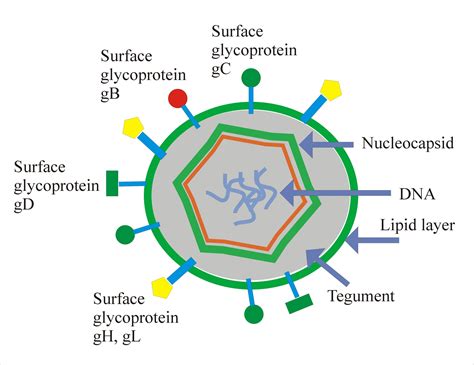Have you ever stopped to think about the viruses that circulate among us? In addition to the more well-known diseases, like COVID-19, there are other viral culprits wreaking havoc on our health and economy. Take seasonal influenza, for example. Every year, it sweeps through populations worldwide, leaving behind a trail of illness and costing billions of dollars in the United States alone.
And then there’s herpes simplex virus-1 (HSV-1), a sneaky bug transmitted primarily through oral contact. This virus infects a staggering two-thirds of the global population and is even responsible for causing infectious blindness in Western countries.
With vaccination rates against influenza lagging and no vaccine available yet for HSV, researchers have been racing to find innovative ways to tackle these viral foes. One such groundbreaking approach has emerged from the School of Dental Medicine at the University of Pennsylvania and their collaborators in Finland.
Their latest study published in Molecular Therapy unveils an intriguing strategy aimed at reducing viral transmission right where it often begins – in the oral cavity.
Henry Daniell, a distinguished professor at Penn’s School of Dental Medicine and one of the driving forces behind this research effort, explains that their previous work targeting SARS-CoV-2 yielded promising results. By honing in on reducing viral loads specifically in saliva or swab samples by over 95%, they paved the way for what was to come next.
In this new study, Daniell and his team explored the potential of a chewing gum infused with an antiviral trap protein called FRIL, naturally present in lablab beans (Lablab purpureus). These beans were formulated into a chewing gum designed to release FRIL effectively at sites where viral infections take hold.
Their experiments focused on testing this unique gum against not just one but two strains each of herpes simplex viruses (HSV-1 and HSV-2) and influenza A (H1N1 and H3N2). The outcomes were nothing short of remarkable – with as little as 40 milligrams of bean gum tablet reducing viral loads by more than 95%, mirroring their success with SARS-CoV-2.
What sets this chewing gum apart is not just its efficacy but also its safety profile. Developed as a clinical-grade drug product meeting FDA standards, it offers hope for future human trials aimed at curbing virus transmission effectively.
Daniell envisions broader applications beyond just influenza and HSV control. With bird flu outbreaks making headlines across North America recently, including millions of affected birds and several human infections reported, there’s an urgent need for interventions like these. Previous studies have demonstrated lablab bean powder’s ability to neutralize bird flu strains like H5N1 and H7N9 effectively. Now, Daniell plans to explore incorporating this powder into bird feed as part of efforts to combat avian flu transmission among birds.
In reflecting on the significance of their findings, Daniell emphasizes how crucial it is to address viral transmission comprehensively. He sees their antiviral discovery as a timely breakthrough capable not only of combating human flu viruses but also avian variants that threaten both humans and birds alike.
As Henry Daniell drives forward with his team towards potentially transformative solutions against diverse viral threats like influenza and herpes simplex viruses – showcasing how nature’s own defenses can inspire ingenious approaches in our battle against infectious diseases.









Leave feedback about this